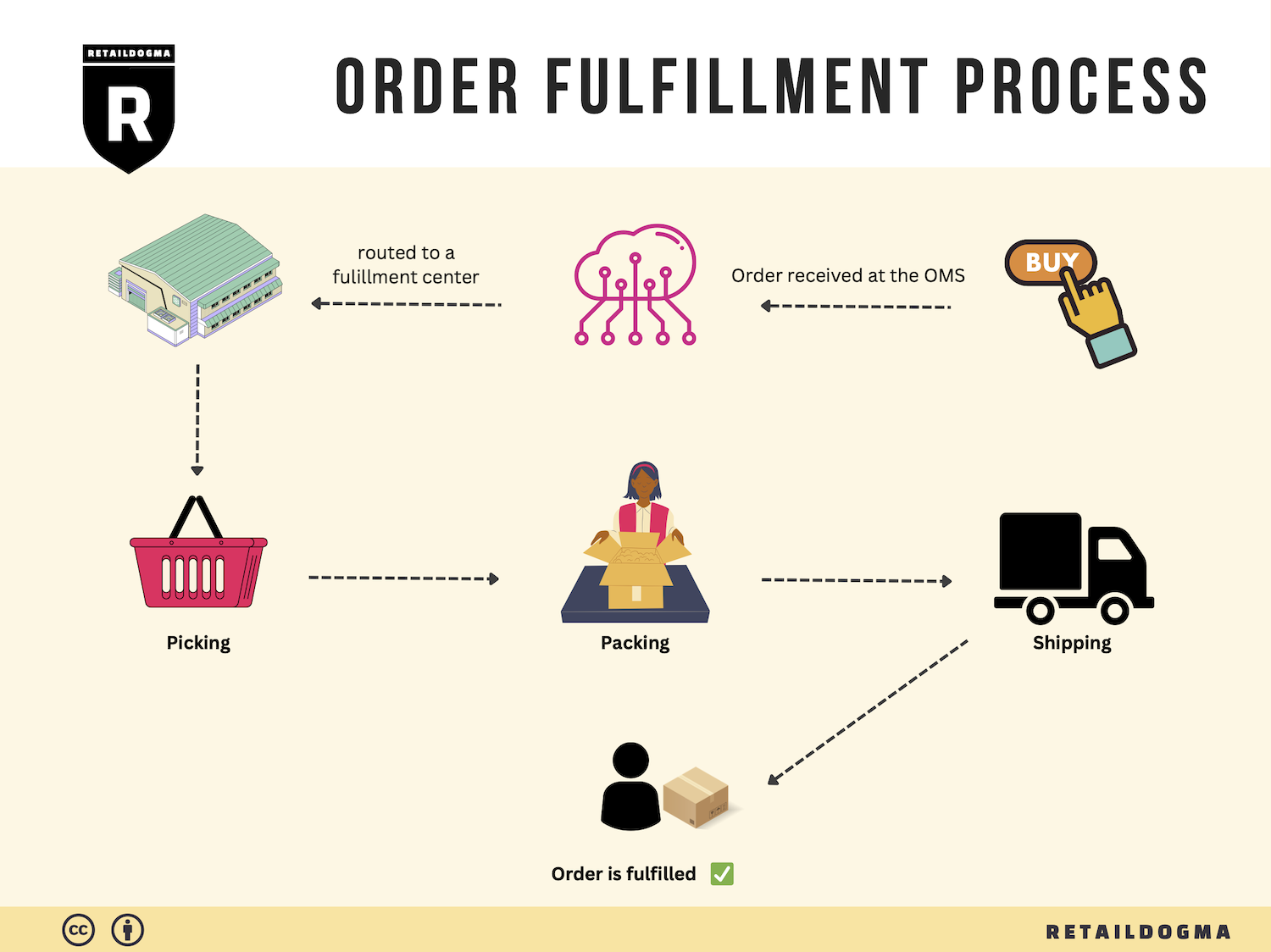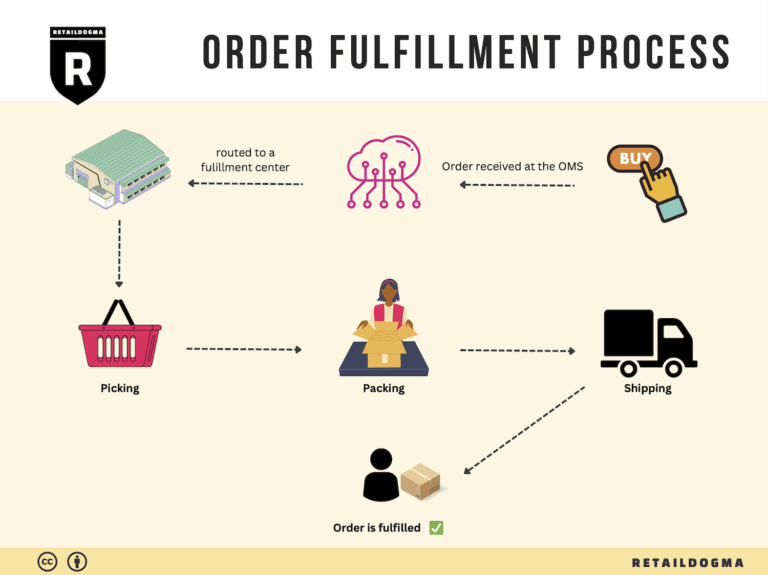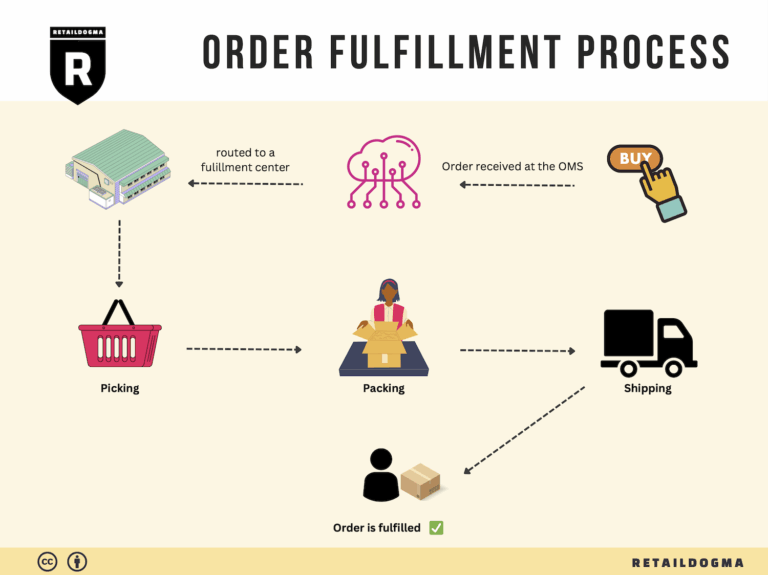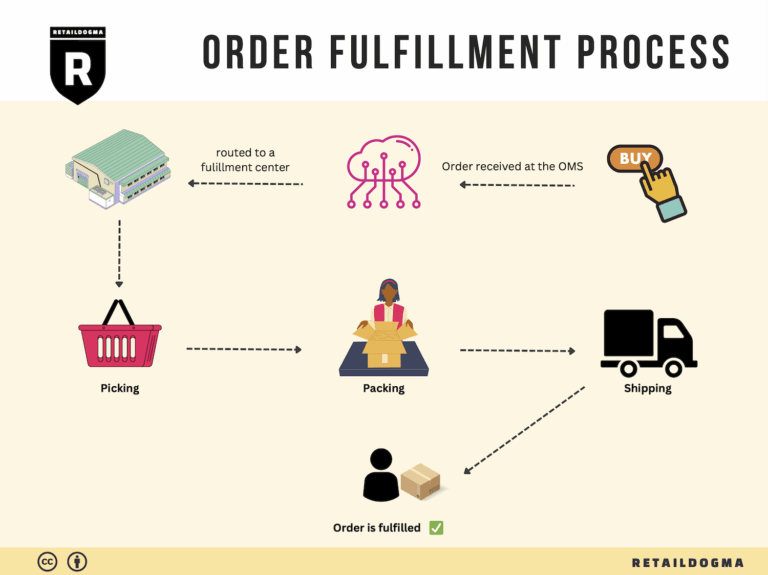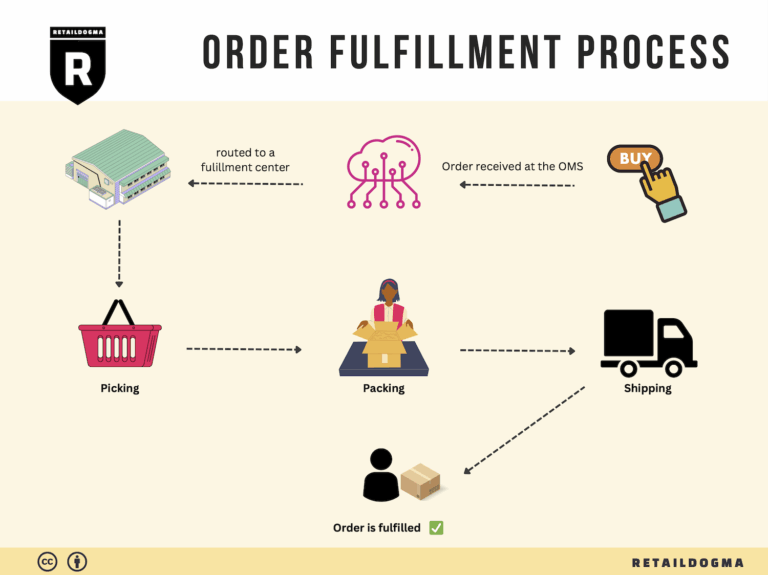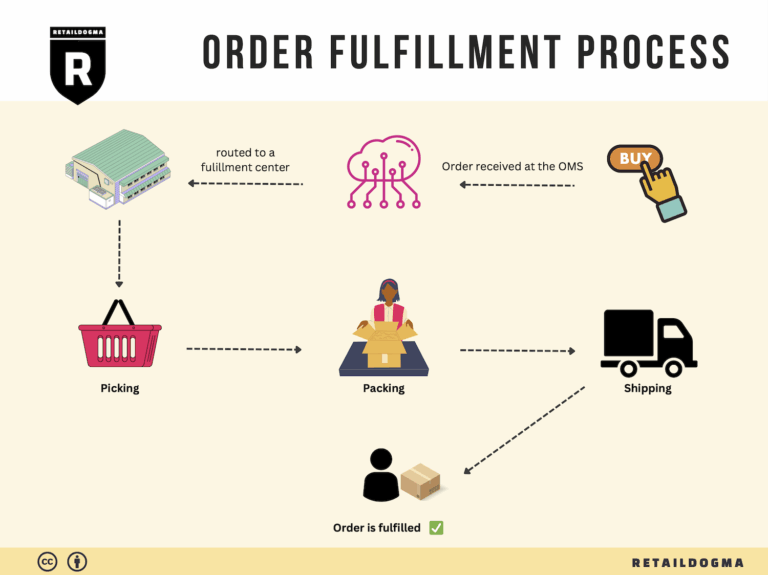Ecommerce Fulfillment Services: The Ultimate Guide (2025)
What is E-commerce Fulfillment? An Introduction for Growing Businesses
Understanding E-commerce Fulfillment
As an e-commerce business owner, you may find yourself grappling with the complexities of packing and shipping orders. What once felt manageable can quickly become overwhelming as your sales grow. The reality is that fulfillment—the process of getting a product from your warehouse to your customer’s doorstep—can be a significant pain point. However, mastering this process is crucial for scaling your business efficiently and maintaining customer satisfaction.
E-commerce fulfillment encompasses a range of activities that include receiving inventory, storing products, processing orders, packing, and shipping. While it may sound straightforward, the intricacies of each step can vary widely based on the fulfillment model you choose. In this guide, we will explore various fulfillment strategies, including Third-Party Logistics (3PL) providers and Amazon’s Fulfillment by Amazon (FBA) service, to help you understand the options available to you.
Key Components of E-commerce Fulfillment
This guide will cover the core services integral to e-commerce fulfillment, such as inventory management, order processing, packaging solutions, and shipping logistics. Each of these components plays a critical role in ensuring that your products reach customers in a timely and cost-effective manner.
Choosing the Right Fulfillment Partner
Selecting the right fulfillment partner is a pivotal decision that can greatly affect your operations. We will provide insights on what to consider when evaluating potential partners, including technology capabilities, scalability, geographic reach, and customer service. Understanding these factors will empower you to make informed choices that align with your business goals.
Pricing Models and Considerations
Lastly, we will delve into the pricing structures associated with different fulfillment models. Understanding the cost implications of each option will help you develop a budget that supports your growth without sacrificing quality or service.
Empowering Your Logistics Decisions
The ultimate goal of this guide is to empower you with the knowledge and tools necessary to make smart decisions about your logistics. By understanding the various fulfillment options and best practices, you can streamline your operations, reduce costs, and enhance customer satisfaction. As you scale your e-commerce business, effective fulfillment strategies will be a cornerstone of your success, allowing you to focus on what you do best—growing your brand and serving your customers.

What You’ll Learn In This Guide
- What is E-commerce Fulfillment? An Introduction for Growing Businesses
- The Order Fulfillment Process: From ‘Buy’ Button to Customer’s Door
- Comparing Fulfillment Models: In-House vs. 3PL vs. Dropshipping
- A Deep Dive into Amazon FBA: Pros, Cons, and Who It’s For
- Core Services Offered by Fulfillment Centers
- How to Choose a Fulfillment Partner: A 6-Point Checklist
- Understanding Fulfillment Pricing: A Breakdown of Common Fees
- Frequently Asked Questions (FAQs) about Fulfillment
- Conclusion: Is Outsourcing Fulfillment the Right Move for Your Business?
- Important Disclaimer
The Order Fulfillment Process: From ‘Buy’ Button to Customer’s Door
1. Receiving Inventory
The first step in the order fulfillment process involves receiving inventory at the fulfillment center. This is where products arrive from manufacturers or suppliers and are prepared for storage. During this stage, each product is checked against a purchase order to ensure accuracy and quality. Key terms associated with this process include SKU (Stock Keeping Unit), which is a unique identifier for each product, allowing for precise tracking.
This step is crucial because it sets the foundation for effective inventory management. Accurate receiving ensures that the fulfillment center has the correct products available for customers, minimizing the risk of stockouts and ensuring smooth operations. Additionally, a well-organized receiving process helps streamline the subsequent steps in the fulfillment chain, ultimately enhancing customer satisfaction.
2. Warehouse Storage
Once the inventory has been received and verified, it is stored within the fulfillment center. This involves categorizing and organizing the products in a manner that optimizes space and accessibility. In many modern fulfillment centers, advanced technology and systems are employed for this purpose, such as WMS (Warehouse Management Systems), which manage the location and status of inventory in real-time.
The importance of warehouse storage cannot be overstated. Efficient storage solutions ensure that products can be easily located and retrieved when orders are placed. Additionally, strategic storage practices can minimize handling time and reduce the risk of damage to products. For e-commerce businesses aiming to scale, a well-organized storage system can significantly enhance the speed and efficiency of the order fulfillment process.
3. Order Picking
Order picking is the process where items are selected from their storage locations based on customer orders. This step typically utilizes pick lists, which provide detailed information about the items needed for each order, including their locations within the warehouse. In many fulfillment centers, automation plays a significant role; for example, robots may bring storage pods to pick stations where workers can efficiently gather items.
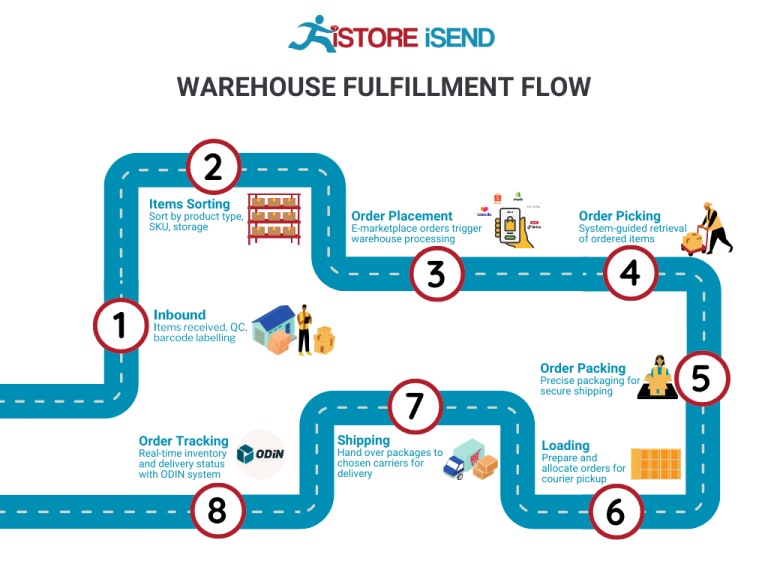
The significance of order picking lies in its direct impact on order accuracy and fulfillment speed. Errors in this stage can lead to incorrect orders being shipped, which can harm customer trust and satisfaction. By implementing efficient picking methods and leveraging technology, businesses can streamline this process, reduce labor costs, and improve overall operational efficiency.
4. Order Packing
After items have been picked, the next step is order packing. During this phase, products are carefully packaged for shipment. This process involves verifying the picked items against the order, selecting appropriate packing materials, and securing the contents to withstand transit. Key technologies in this step include automated packing stations, which can optimize box sizes and reduce waste.
Packing is a critical step in the fulfillment process because it directly affects the customer’s unboxing experience. Well-packed items not only minimize the risk of damage during transit but also enhance perceived value. Moreover, efficient packing processes can lead to cost savings in shipping expenses and materials, ultimately benefiting the bottom line for e-commerce businesses.
5. Shipping & Delivery
The final step in the order fulfillment process is shipping and delivery. Once orders are packed, they are labeled and sorted based on their destinations. This stage may involve multiple shipping methods, including ground transportation, air freight, and partnerships with carriers like the U.S. Postal Service. The term SLAM (Scan, Label, Apply, Manifest) is often associated with this phase, as it describes the automated processes used to ensure accurate and efficient shipping.
Shipping and delivery are paramount for customer satisfaction, particularly in an era where consumers expect rapid fulfillment. Efficient logistics operations can lead to faster delivery times and reduced shipping costs, which are critical for maintaining a competitive edge in the e-commerce landscape. By optimizing this final step, businesses can enhance their service offerings, improve customer retention, and ultimately drive sales growth.
In conclusion, understanding and optimizing each step of the order fulfillment process is essential for e-commerce businesses looking to scale effectively. By focusing on efficiency, accuracy, and customer satisfaction throughout these stages, businesses can create a seamless experience that keeps customers coming back.
Comparing Fulfillment Models: In-House vs. 3PL vs. Dropshipping
Comparison of Fulfillment Models
| Model | Who Handles Inventory | Best For (Business Stage) | Key Advantage | Key Disadvantage |
|---|---|---|---|---|
| In-House Fulfillment | The business itself | Startups to established | Full control over inventory and processes | High overhead costs and resource demand |
| Third-Party Logistics (3PL) | A specialized logistics provider | Growth and scaling | Reduced operational burden and expertise | Less control over inventory management |
| Dropshipping | Suppliers and manufacturers | Startups and small businesses | Low startup costs and inventory risk | Lower profit margins and dependence on suppliers |
In-House Fulfillment
In-house fulfillment refers to the process where a business manages its own inventory and order fulfillment operations. This model is typically favored by startups that are just starting to scale, as well as established businesses that have the resources to maintain their own fulfillment centers. The primary advantage of in-house fulfillment is the control it offers over inventory management, order processing, and customer experience. Businesses can tailor their fulfillment processes to meet specific customer needs and have direct oversight of their operations. However, this model also comes with significant disadvantages, primarily related to cost and resource allocation. Running an in-house fulfillment operation requires substantial investment in warehousing, staffing, technology, and logistics. These overhead costs can strain cash flow, especially for smaller businesses that may not have the volume to justify such expenses. Additionally, as order volumes increase, maintaining efficient operations can become increasingly complex, requiring sophisticated systems and trained personnel.
Third-Party Logistics (3PL)
Third-party logistics (3PL) involves outsourcing logistics and fulfillment operations to a specialized provider. This model is particularly beneficial for businesses that are in a growth phase and need to scale their operations without the burden of managing logistics themselves. A 3PL provider offers expertise in inventory management, warehousing, and shipping, allowing businesses to focus on their core competencies, such as marketing and product development. The key advantage of using a 3PL is the reduced operational burden; businesses can leverage the provider’s established systems and resources, which can lead to improved efficiency and cost savings. However, outsourcing fulfillment also means that businesses relinquish some control over their inventory management. This can lead to challenges in maintaining brand consistency and customer satisfaction if the 3PL does not meet the business’s standards. Furthermore, businesses must navigate the complexities of communication and coordination with their logistics partner, which can sometimes result in delays or errors.
Dropshipping
Dropshipping is a fulfillment model where the retailer does not keep products in stock but instead transfers customer orders and shipment details to the manufacturer or wholesaler, who then ships the products directly to the customer. This model is particularly appealing to startups and small businesses due to its low startup costs and minimal inventory risk. Entrepreneurs can launch e-commerce stores without the need for significant capital investment in inventory or warehousing, making it a low-barrier entry point to the market. Additionally, dropshipping allows businesses to offer a wide range of products without the financial commitment associated with holding stock. However, dropshipping also presents notable disadvantages. The most significant is the lower profit margins, as retailers often pay a premium for the convenience of having products shipped directly from suppliers. Furthermore, businesses relying on dropshipping are dependent on their suppliers for inventory management and shipping, which can lead to issues with stock availability, order fulfillment speed, and overall customer service. If a supplier fails to deliver on time or provides subpar products, it directly impacts the retailer’s reputation and customer satisfaction.
By understanding the strengths and weaknesses of each fulfillment model, e-commerce business owners can make informed decisions that align with their operational capacity, growth trajectory, and customer service goals. Each model offers unique advantages and challenges, and the choice ultimately depends on the specific needs and circumstances of the business.
A Deep Dive into Amazon FBA: Pros, Cons, and Who It’s For
Understanding Fulfillment by Amazon (FBA)
Fulfillment by Amazon (FBA) is a service that allows e-commerce sellers to leverage Amazon’s extensive fulfillment network to store, pack, and ship their products. When sellers enroll in FBA, they send their inventory to Amazon’s fulfillment centers, where Amazon takes care of the entire fulfillment process on their behalf. This includes receiving inventory, storing it, picking and packing orders, and handling customer service and returns.
FBA is designed to simplify the logistics of selling online, enabling sellers to reach a vast customer base while ensuring efficient order processing. The program is particularly attractive for those looking to scale their e-commerce operations without the overhead associated with managing a fulfillment process in-house.
How FBA Works
-
Sign Up: Sellers create an Amazon Seller account and enroll in the FBA program.
-
Inventory Shipment: Sellers prepare their products according to Amazon’s guidelines and ship them to designated fulfillment centers. Amazon provides specific instructions on how to label and package items for efficient processing.
-
Storage: Once the inventory arrives at the fulfillment center, it is stored until an order is placed. Amazon uses advanced inventory management systems to track products and optimize storage space.
-
Order Processing: When a customer places an order for a product fulfilled by FBA, Amazon automatically retrieves the item from the warehouse, packs it, and ships it directly to the customer.
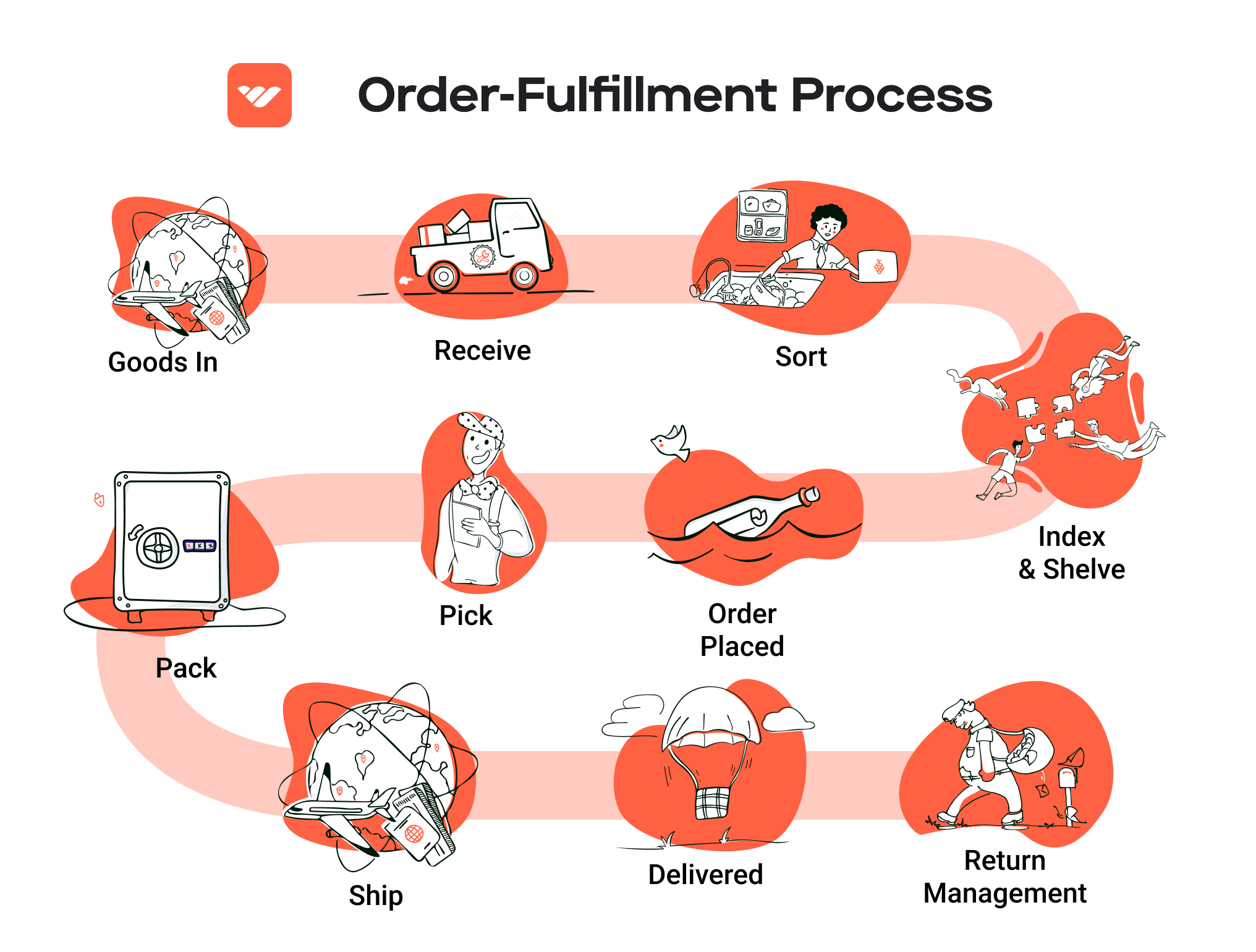
-
Customer Service: Amazon handles all customer service inquiries related to FBA orders, including returns and refunds, which alleviates a significant burden from sellers.
-
Payment: After the sale is completed, Amazon deducts FBA fees and transfers the remaining revenue to the seller’s account.
Pros of Fulfillment by Amazon (FBA)
Prime Eligibility
One of the most significant advantages of FBA is that products become eligible for Amazon Prime. This means that Prime members can receive free two-day shipping on eligible products, which can significantly boost sales. As a result, many sellers see increased visibility and higher conversion rates due to the trust and appeal associated with Prime offerings.
Customer Trust
Amazon is synonymous with reliability and customer service. By utilizing FBA, sellers can leverage Amazon’s brand recognition and reputation, which fosters trust among customers. Buyers are often more inclined to purchase from FBA listings due to the assurance of fast shipping, easy returns, and excellent customer service.
Multi-Channel Fulfillment
FBA allows sellers to fulfill orders not only from Amazon but also from other sales channels, including their own websites or platforms like eBay or Shopify. This flexibility enables sellers to manage their inventory and fulfillment through a single, efficient system, simplifying operations and potentially increasing sales across multiple platforms.
Cons of Fulfillment by Amazon (FBA)
High Fees
While FBA offers numerous advantages, it also comes with various fees that can add up quickly. These include storage fees for holding inventory in Amazon’s warehouses, fulfillment fees for each order processed, and additional costs for returns and long-term storage. Sellers need to carefully calculate these expenses to ensure that they do not erode their profit margins.
Strict Inventory Rules
Amazon has specific guidelines that sellers must adhere to regarding inventory management. This includes strict requirements for product labeling, packaging, and inventory limits. Failure to comply with these rules can result in penalties or even the suspension of the seller’s account. Managing these regulations can be cumbersome, particularly for smaller businesses.
Commingling Risks
When sellers send their inventory to Amazon, their products may be commingled with those of other sellers. This means that when a customer orders an item, they could receive a product from a different seller’s inventory. This can lead to issues with product quality and brand reputation, especially if the other seller has poor quality control practices. Sellers must weigh the risks of commingling against the benefits of FBA.
Who is FBA Best For?
Fulfillment by Amazon is particularly advantageous for:
-
Small to Medium-Sized Sellers: Those who do not have the resources to manage their own warehousing and logistics can greatly benefit from FBA’s extensive infrastructure and expertise.
-
Brands Looking to Scale: Companies that want to rapidly increase their market reach and sales volume can leverage FBA to handle fulfillment efficiently, allowing them to focus on marketing and product development.
-
Sellers with Seasonal Products: Businesses that experience fluctuations in demand can benefit from FBA’s flexibility, especially during peak seasons when managing fulfillment in-house can become overwhelming.
-
Multi-Channel Sellers: Businesses that sell across various platforms can streamline their operations by using FBA for order fulfillment, allowing them to manage inventory and shipping from a single location.
In conclusion, while FBA provides a powerful tool for scaling e-commerce operations, sellers must carefully evaluate the associated costs and regulations. By understanding the pros and cons, businesses can make informed decisions on whether FBA aligns with their operational goals and growth strategies.
Core Services Offered by Fulfillment Centers
Inventory Management & Warehousing
Inventory management and warehousing are foundational services provided by fulfillment centers, enabling businesses to maintain optimal stock levels while efficiently managing storage space. Fulfillment centers employ sophisticated inventory management systems that track product quantities, locations, and movements within the warehouse. These systems often utilize barcode scanning and automated inventory updates to ensure real-time accuracy.
For e-commerce businesses, effective inventory management can significantly reduce costs associated with overstocking or stockouts. By leveraging the fulfillment center’s capabilities, businesses can ensure that popular items are readily available for shipping, thereby enhancing customer satisfaction and minimizing lost sales opportunities. Furthermore, centralized warehousing allows companies to scale their operations without the overhead associated with maintaining their own storage facilities.
Pick and Pack Services
Pick and pack services are critical components of the fulfillment process, involving the selection of items from inventory and packaging them for shipment. Fulfillment centers streamline this process through the use of advanced technology, such as automated picking systems and sorting robots, which increase speed and accuracy.
For e-commerce businesses, the benefits of efficient pick and pack services are manifold. Firstly, these services reduce the time taken from order placement to delivery, allowing businesses to meet customer expectations for fast shipping. Secondly, accuracy in picking minimizes errors, which can lead to costly returns and customer dissatisfaction. By outsourcing these processes to a fulfillment center, businesses can focus on core activities such as marketing and product development while ensuring that their logistics operations are handled expertly.
Kitting and Assembly
Kitting and assembly refer to the process of combining multiple products into a single package or assembling components into a finished product before shipping. This service is particularly beneficial for businesses that sell bundles, gift sets, or customized orders. Fulfillment centers have the expertise and resources to efficiently execute kitting and assembly tasks, ensuring that products are packaged correctly and in a timely manner.
The advantages for e-commerce businesses are significant. Kitting allows for enhanced product offerings, enabling businesses to create unique bundles that appeal to customers and differentiate their brand in a crowded market. Additionally, by utilizing fulfillment centers for these tasks, businesses can save on labor costs and reduce the complexity of their operations. This enables them to respond swiftly to market demands and seasonal trends, ultimately driving sales and customer loyalty.
Returns Management (Reverse Logistics)
Returns management, or reverse logistics, is the process of handling returned products efficiently and effectively. Fulfillment centers provide specialized services for returns management, including inspection, restocking, refurbishment, and disposal of returned items. This service is crucial for e-commerce businesses, as returns can significantly impact profitability and customer satisfaction if not managed properly.
Implementing an effective returns management strategy through a fulfillment center offers several benefits. Firstly, it streamlines the return process for customers, enhancing their experience and increasing the likelihood of repeat purchases. Secondly, it allows businesses to quickly assess the condition of returned items and make informed decisions about restocking or refurbishing products. By minimizing the time and resources spent on returns, businesses can focus on growth strategies while maintaining a positive brand reputation.
Conclusion
In summary, fulfillment centers provide a range of core services that are essential for e-commerce businesses looking to scale their operations. From inventory management and warehousing to pick and pack services, kitting and assembly, and returns management, these services enable businesses to operate more efficiently, reduce costs, and enhance customer satisfaction. By partnering with a fulfillment center, e-commerce companies can leverage specialized expertise and technology, allowing them to focus on their core competencies and drive growth in an increasingly competitive marketplace.
How to Choose a Fulfillment Partner: A 6-Point Checklist
Location & Warehouse Network
Importance: The geographic location of a fulfillment partner’s warehouses directly affects shipping times and costs. A partner with strategically located facilities can help you reach your customers faster and more efficiently, which is critical in today’s e-commerce landscape.
Questions to Ask:
1. Where are your warehouses located, and how does this impact shipping times to my primary customer base?
2. Do you have multiple warehouses to cover different regions?
3. How does your network help in optimizing shipping costs, especially for international orders?
Technology & Integrations
Importance: In the fast-paced world of e-commerce, technology plays a crucial role in ensuring efficient order processing, inventory management, and shipping. A partner with robust technology solutions can streamline your operations and provide real-time insights into your supply chain.
Questions to Ask:
1. What technology platforms do you use for inventory management and order processing?
2. Can your systems integrate with my existing e-commerce platforms (e.g., Shopify, WooCommerce, Amazon)?
3. Do you offer real-time tracking for shipments, and how can I access this information?
4. How do you ensure data security and compliance with regulations?
Specializations (e.g., cold storage, oversized items)
Importance: Not all fulfillment partners can handle every type of product. If your business involves specialized items like perishables, oversized goods, or hazardous materials, you need a partner with the right capabilities and certifications.
Questions to Ask:
1. Do you have experience handling products similar to mine (e.g., cold storage, fragile items, or oversized products)?
2. What certifications or licenses do you hold for handling specialized goods?
3. How do you ensure the quality and safety of specialized items during storage and shipping?
4. What processes do you have in place to manage returns for specialized items?
Scalability & Capacity
Importance: As your business grows, so will your fulfillment needs. Choosing a partner that can scale with you is essential to avoid disruptions in your supply chain. A partner with ample capacity can accommodate seasonal spikes and long-term growth.
Questions to Ask:
1. How do you manage fluctuations in order volume, especially during peak seasons?
2. What is your capacity for handling increased order volumes, and how quickly can you scale up operations?
3. Do you have contingency plans for unexpected growth or challenges in capacity?
4. Can you provide examples of how you’ve successfully scaled for other clients?
Pricing and Contracts
Importance: Understanding the pricing structure and contract terms is critical to managing your operational costs. Hidden fees can significantly impact your profitability, so it’s essential to have a clear understanding of what you will be paying for.
Questions to Ask:
1. What is your pricing model (e.g., per order, per item, monthly fee)?
2. Are there any additional fees (e.g., for storage, returns, packaging) that I should be aware of?
3. What are the terms of the contract, and how flexible are they if my needs change?
4. Can you provide a detailed breakdown of costs based on my expected order volumes?
Customer Support & Reviews
Importance: Efficient customer support is vital for resolving issues quickly and maintaining smooth operations. Additionally, researching reviews can provide insights into a partner’s reliability and service quality.
Questions to Ask:
1. What kind of customer support do you offer (e.g., phone, email, chat), and what are your response times?
2. How do you handle disputes or issues that arise during the fulfillment process?
3. Can you provide references or case studies from other businesses similar to mine?
4. What is your process for gathering and responding to customer feedback?
Conclusion
Choosing the right fulfillment partner is a critical decision that can significantly impact your e-commerce business’s efficiency and growth potential. By carefully considering the above six points and asking the right questions, you can make an informed choice that aligns with your operational needs and customer expectations. Remember, a strong fulfillment partner not only helps in managing logistics but also enhances your overall customer experience, leading to greater customer loyalty and business success.
Understanding Fulfillment Pricing: A Breakdown of Common Fees
Initial Setup Fees
When partnering with a fulfillment center, businesses often encounter initial setup fees. These fees are typically charged to onboard a seller into the fulfillment system. They can cover various costs, including account creation, integration with e-commerce platforms, and initial training on using the fulfillment center’s software and tools.
The calculation of initial setup fees can vary widely depending on the complexity of the integration and the level of support required. For example, if a business needs custom software solutions to connect its inventory management system with the fulfillment center, costs could be higher. Conversely, a straightforward setup with minimal customization may incur lower fees. It’s crucial to clarify what services are included in the initial setup fee to avoid unexpected costs.
Receiving Fees
Receiving fees are charged for the process of accepting and processing incoming inventory. These fees cover the labor and resources needed to unload shipments, inspect goods for damage, and properly categorize and store items within the warehouse.
Typically, receiving fees are calculated based on the volume of goods being received, often measured in units or pallets. For example, a fulfillment center might charge a fee per pallet received or per hour of labor involved in processing the shipment. Some providers may also implement tiered pricing, where the cost per unit decreases as the volume of shipments increases. Understanding this fee structure can help businesses manage their incoming inventory costs effectively.
Storage Fees (per pallet/bin)
Storage fees are incurred for the duration that products remain in the fulfillment center. These fees are generally calculated on a per pallet or per bin basis and vary based on the size and type of inventory. Businesses are charged for the total space their products occupy within the warehouse.
Storage fees can be charged monthly or annually, with some fulfillment centers offering discounts for long-term storage. It’s essential for e-commerce businesses to keep a close eye on their inventory turnover rates to avoid high storage fees, especially during slow sales periods. Many fulfillment centers also implement minimum storage fees, which can impact businesses that are just starting and may not have a large volume of inventory.
Pick & Pack Fees (per item/order)
Pick and pack fees are one of the most significant costs associated with fulfillment services. These fees cover the labor involved in selecting items from storage and packing them for shipment. The fees are generally calculated on a per-item or per-order basis, depending on the fulfillment center’s pricing model.
For example, a fulfillment center may charge a flat fee for each order processed, which includes picking and packing, or they may charge separately for each item within an order. Understanding how these fees are structured is critical, as it can affect pricing strategies and overall profit margins. Businesses should also consider the efficiency of the fulfillment center’s picking process, as faster and more accurate fulfillment can lead to lower overall costs.
Shipping Fees
Shipping fees are incurred when orders are sent to customers. These fees can vary significantly based on factors such as package weight, dimensions, shipping speed, and the destination. Fulfillment centers often have negotiated rates with various carriers, which can benefit businesses by providing lower shipping costs than if they were to ship independently.
Shipping fees are typically calculated based on the service level chosen (e.g., standard, expedited, overnight) and can include additional costs for handling or special packaging. Businesses should analyze their shipping needs and consider how they can optimize shipping methods to reduce costs. For instance, leveraging regional fulfillment centers can help decrease shipping times and costs by positioning inventory closer to customers.
Conclusion: Tips for Getting an Accurate Quote
-
Request Detailed Pricing Information: Always ask for a breakdown of all potential fees associated with fulfillment services. This includes not just the basic costs, but also any additional charges that might apply, such as for returns or special handling.
-
Understand Volume Discounts: Inquire about volume discounts and how they apply to your specific inventory levels. Many fulfillment centers offer reduced rates for businesses that reach certain thresholds.
-
Evaluate Your Needs: Clearly outline your business requirements and expected order volume. This will help fulfillment centers provide more tailored quotes that reflect your specific situation.
-
Consider Long-term Costs: Look beyond initial setup fees and consider ongoing costs like storage and shipping. Understanding the long-term financial implications will aid in making a more informed decision.
-
Negotiate Terms: Don’t hesitate to negotiate terms with fulfillment centers. Depending on your projected sales and order volume, there may be room for better rates or more favorable terms.
By thoroughly understanding these common fees and diligently seeking accurate quotes, e-commerce businesses can make informed decisions that will support their growth and operational efficiency.
Frequently Asked Questions (FAQs) about Fulfillment
1. What is the Amazon Fulfillment Center Ont 6?
The Amazon Fulfillment Center Ont 6, located in Moreno Valley, California, is a state-of-the-art facility designed to handle a vast volume of e-commerce orders. Spanning over 1.25 million square feet, it features advanced automation technologies, including more than 14 miles of conveyors, to optimize the processes of receiving, storing, picking, packing, and shipping products to customers.
2. What types of products are fulfilled at Ont 6?
The Ont 6 facility primarily fulfills standard orders for Amazon products, with a specific focus on apparel, shoes, handbags, and accessories destined for customers on the West Coast. This specialization allows for quicker processing and shipping times for these categories.
3. How does the order fulfillment process work at Ont 6?
The order fulfillment process at Ont 6 involves several key steps:
1. Receiving Inventory: Products are received and sorted upon arrival.
2. Stowing: Items are stored in designated areas, tracked via barcode scanning.
3. Order Processing: When an order is placed, the fulfillment center receives it automatically.
4. Picking: Items are retrieved from storage, often assisted by automated systems.
5. Packing: Orders are packed securely using optimal box sizes to minimize waste.
6. Shipping: Packed orders are labeled and sorted for delivery, utilizing various transportation methods based on urgency.
4. What is the difference between a warehouse and a fulfillment center?
A warehouse is primarily used for storage of goods, while a fulfillment center is designed specifically for the order fulfillment process. Fulfillment centers handle inventory management, order processing, picking, packing, and shipping directly to customers, often utilizing sophisticated technology to streamline operations. In contrast, warehouses focus more on bulk storage and may not have the infrastructure for rapid order processing.
5. What is a Third-Party Logistics Provider (3PL)?
A Third-Party Logistics Provider (3PL) is a company that offers outsourced logistics services, which can include warehousing, fulfillment, and transportation. Businesses often partner with 3PLs to leverage their expertise, technology, and infrastructure, allowing them to scale operations without the need to invest heavily in their own logistics capabilities. Amazon’s Fulfillment by Amazon (FBA) service is a form of 3PL.
6. How much do fulfillment services cost at Amazon Fulfillment Centers?
The cost of fulfillment services at Amazon varies based on several factors, including the size and weight of the products, the type of service required (standard or expedited), and the volume of orders processed. Typically, sellers pay a per-unit fee for storage and fulfillment, along with additional costs for optional services like labeling or returns processing. It’s essential for businesses to evaluate these costs against their sales margins to ensure profitability.
7. How can businesses benefit from using Ont 6 for fulfillment?
Businesses can significantly benefit from using Ont 6 for fulfillment through access to Amazon’s extensive logistics network, which can lead to faster shipping times and improved customer satisfaction. By utilizing the Fulfillment by Amazon (FBA) program, sellers can offload the complexities of order fulfillment, allowing them to focus on marketing and product development while leveraging Amazon’s brand trust and customer base.
8. What technology is used in the Ont 6 fulfillment process?
The Ont 6 fulfillment center employs advanced automation technologies, including sophisticated conveyor systems, robotics for item retrieval, and software that optimizes inventory management and order processing. These technologies enhance efficiency, reduce errors, and ensure that products are picked, packed, and shipped quickly and accurately.
9. What are the employment opportunities at the Ont 6 fulfillment center?
The Ont 6 fulfillment center has created over 3,000 full-time positions since its opening. Employment opportunities range from warehouse associates responsible for picking and packing orders to roles in management, maintenance, and logistics. The facility is recognized for its commitment to providing quality jobs within the local community.
10. How can I get started with Fulfillment by Amazon at Ont 6?
To get started with Fulfillment by Amazon (FBA) at Ont 6, you need to create an Amazon seller account. Once your account is set up, you can enroll in the FBA program. From there, you will send your inventory to the Ont 6 fulfillment center, where Amazon will handle the storage, fulfillment, and customer service aspects of your orders. Make sure to familiarize yourself with Amazon’s guidelines and fees to maximize your benefits from the service.
Conclusion: Is Outsourcing Fulfillment the Right Move for Your Business?
Key Benefits of Outsourcing Fulfillment
Outsourcing your fulfillment can be a game-changer for your e-commerce business. First and foremost, it saves time—allowing you to focus on core activities like marketing, product development, and customer engagement. By delegating the complexities of order processing, warehousing, and shipping to a fulfillment partner, you can streamline operations and enhance productivity.
Another significant benefit is scalability. As your business grows, so do your fulfillment needs. Partnering with a robust fulfillment service, such as Amazon’s fulfillment centers, provides the infrastructure and flexibility to manage increased order volumes without the burden of additional overhead. This scalability is crucial in today’s fast-paced e-commerce landscape, where demand can fluctuate dramatically.
Moreover, outsourcing fulfillment brings expertise into your operations. Fulfillment centers are equipped with advanced technologies, optimized processes, and experienced personnel who specialize in logistics. This expertise ensures accuracy in order processing and enhances customer satisfaction through timely deliveries.
Choosing the Right Partner
However, the benefits of outsourcing fulfillment hinge on selecting the right partner. Your fulfillment provider should align with your business goals, offer transparency in operations, and provide reliable support. A strategic partnership can not only enhance your operational efficiency but also position your brand for sustained growth.
Call to Action
To determine if outsourcing fulfillment is the right next step for your business, conduct a thorough audit of your current shipping processes. Evaluate your order volume, delivery times, and customer feedback. Consider whether your existing system can accommodate future growth or if a dedicated fulfillment partner could provide the resources needed for scaling. By taking this proactive approach, you can make informed decisions that drive your business forward.
Important Disclaimer
⚠️ Important Disclaimer
The information in this guide is for educational purposes. Fulfillment services, pricing, and platform features change frequently. Always conduct your own due diligence and consult with providers directly before making business decisions.
